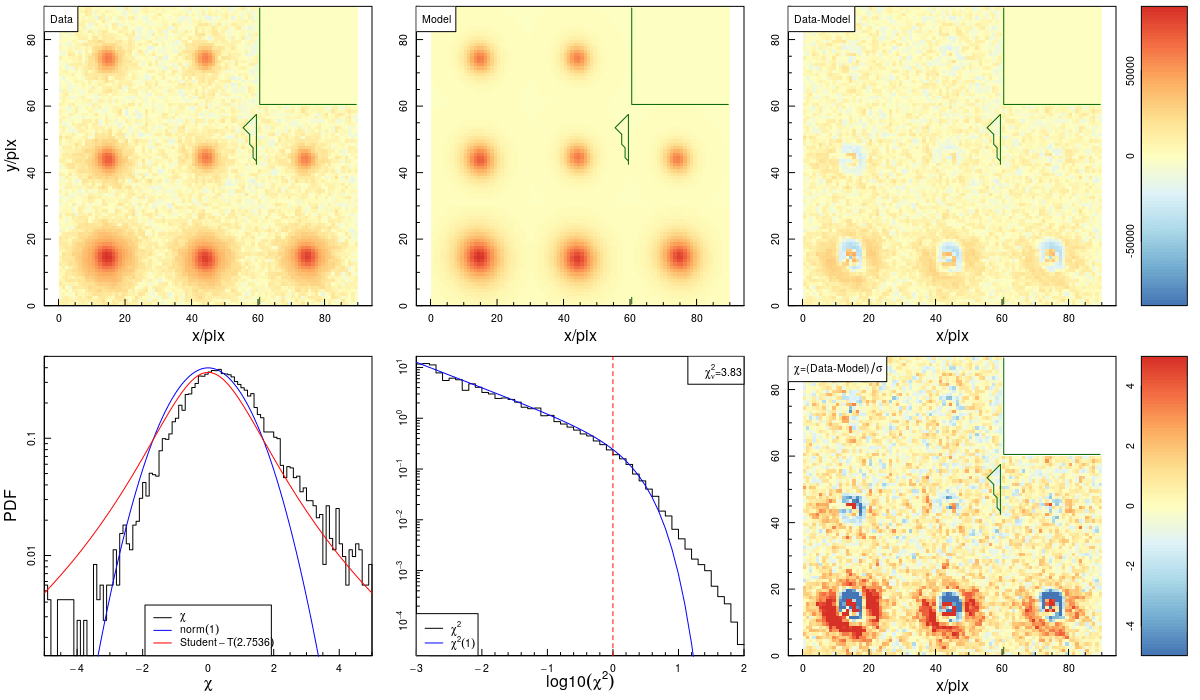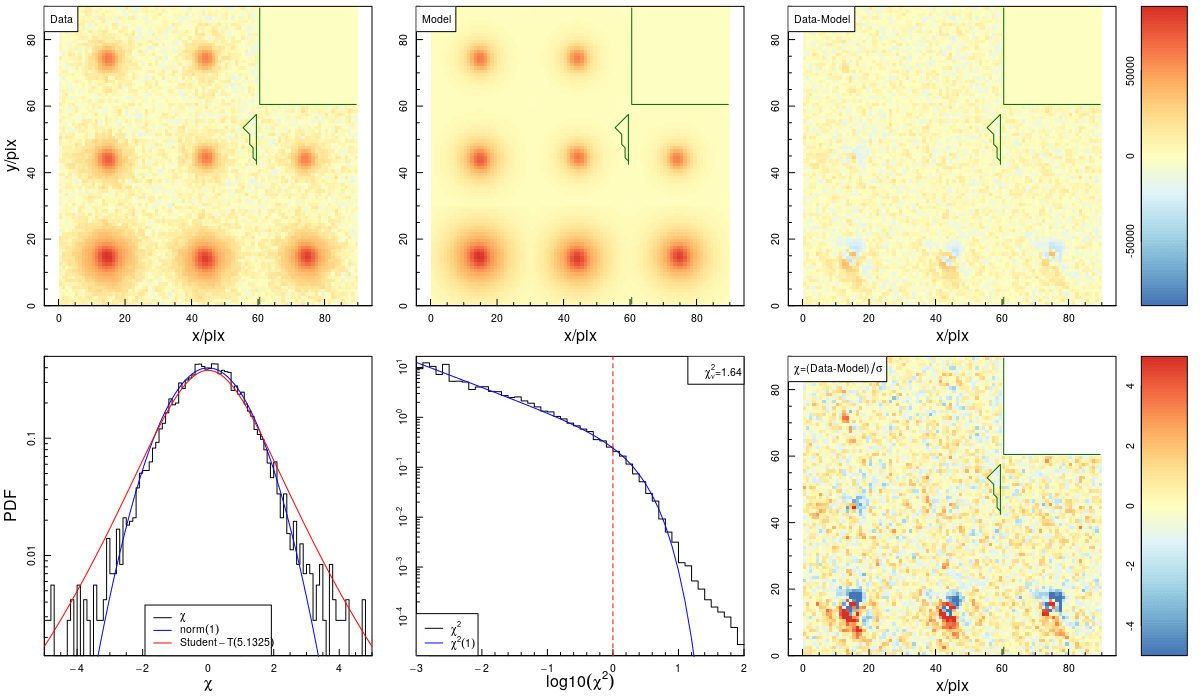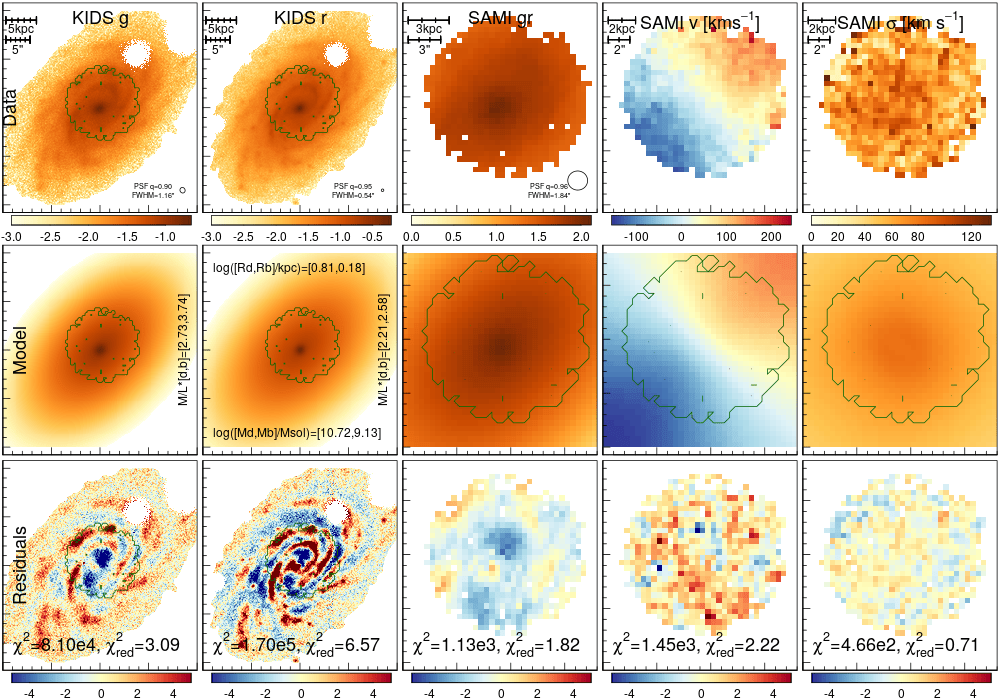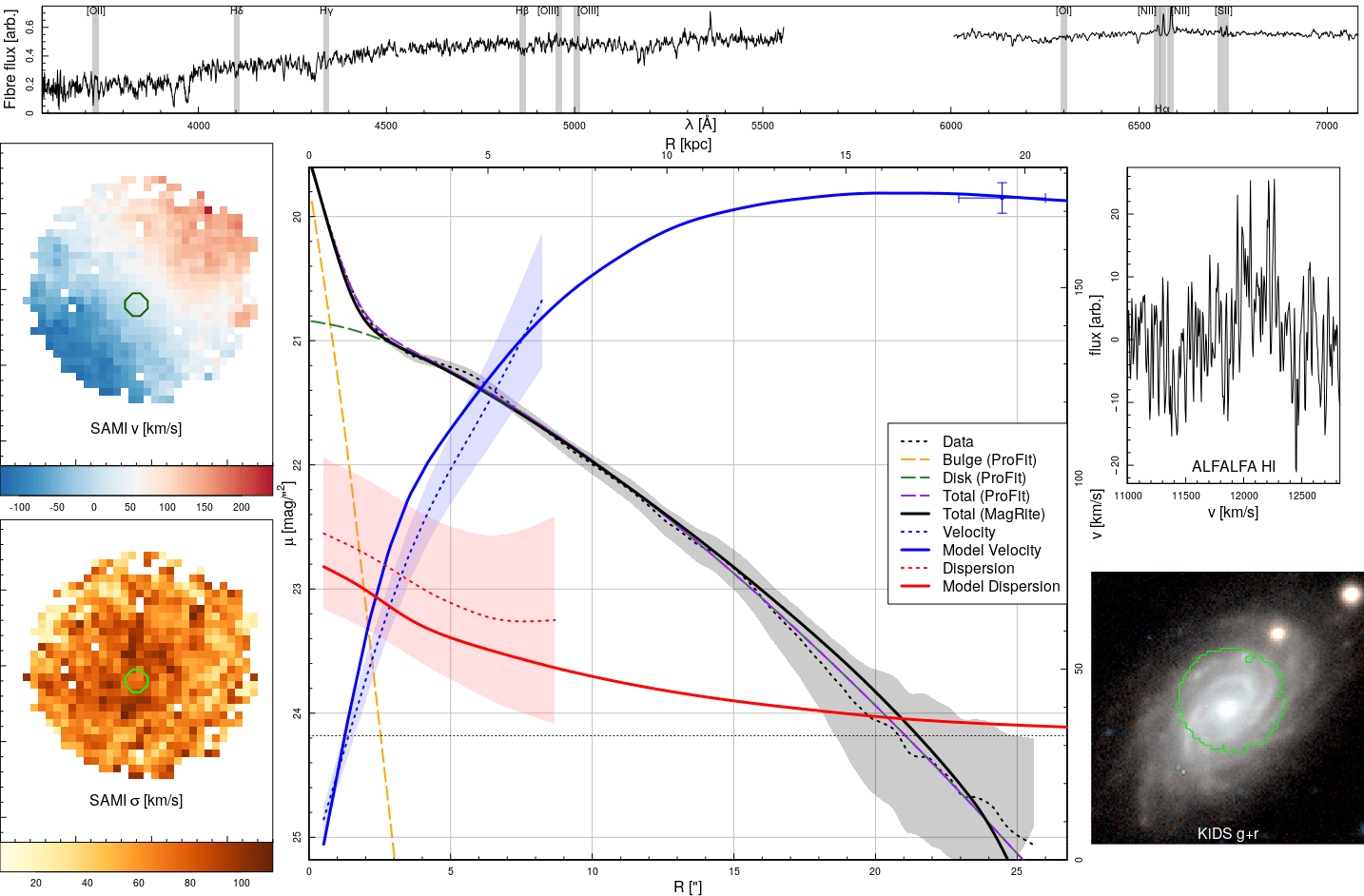I am a CAASTRO Research Associate here at ICRAR/UWA and a member of the SAMI galaxy survey team. I work on modelling and simulating galaxies and their evolution. This page shows highlights from some of the projects and codes I’m working on, a few of which are freely available on my github page. You can also peruse my publication list or download my CV. Once upon a time, I was a PhD student at the University of Toronto, and some evidence of this is on my old website.
Galaxy Modelling
My current main interest is modelling galaxies to determine their fundamental physical parameters like mass, energy and angular momentum, as well as structural parameters like size. As our data come in the form of photon counts, converting images and spectra into masses is a challenging inference problem that requires careful modelling.
Photometry
- ProFit – I am one of the developers of ProFit, an R package for Bayesian galaxy profile fitting. ProFit is fast, stable and flexible and supports a wide variety of optimizers for reliably fitting parametric galaxy models to broadband images. See Robotham et al. 2017 for more details, or just download the code and try it out. We have also set up a discussion forum for users and aspiring developers.
- AllStarFit – I am extending ProFit to perform multi-band source detection and image segmentation using ProFound, multi-component point spread function profile fitting using unsaturated stars, and finally multi-component galaxy fitting. These packages will (soon) support most of the functionality found in the AstrOmatic stack (like SourceExtractor and PSFEx). As an example, check out the figures below, showing single- and double-Moffat profile fits to eight stars surrounding a SAMI galaxy (using KiDS r-band images):

A single-Moffat profile fit to stars in a r-band KiDS image. Significant and mostly radial residuals remain.

A much better double-Moffat profile fit, which removes most of the radial structure in the reisduals.
Dynamical Modelling
- MagRite – MagRite is an R package for dynamical modelling of disk galaxies. MagRite can fit an equilibrium galaxy model with a disk, halo and bulge, using photometry and (integral field) kinematics simultaneously – a first of its kind as far as I’m aware. See the accepted paper (Taranu et al. 2017). In the meantime, have a look at what it can do with SAMI and KiDS data:

A MagRite fit to a SAMI galaxy (G79635), simultaneously fitting the SAMI kinematic maps and KiDS g+r images. Most residuals are from non-axisymmetric features like spiral arms and the model reproduces the data quite well otherwise.

A MagRite fit to SAMI and KiDS data, showing azimuthally-averaged surface brightness, velocity and dispersion profiles plus fits. The ProFit 2D fit is a double-Sersic fit to just the r-band image.
- GalactICS 3.0 – A C code for generating equilibrium bulge/disk/halo galaxy models. See Widrow, Pym & Dubinski (2008) for details on v2.0. John Dubinski has added some fresh new features to 3.0 and I converted to a C++ shared library to interface with MagRite; contact me if you’re interested in testing it for your projects prior to its eventual release (and keep an eye out for Dubinski et al. soon).
- TINA.P.L. – A C++ code for analyzing model/simulated galaxies, and particularly for generating synthetic observations of galaxies from GalactICS or N-body simulations. Despite the name, This Is Not a Pipe(Line). This is a much-improved – actually completely re-written – version of the (not) pipeline first described in Taranu+13 and used in Taranu+15.
Galaxy Simulations
- Isolated Galaxies – GalactICS was originally designed to randomly sample particles in a model galaxy for use as initial conditions in N-body simulations. One of the side benefits of this is that you can build a fully realistic model galaxy by fitting data with MagRite and then simulate it with whatever code you desire. For example, one could test the stability of the model against bar formation, or predict its star formation rate given a model of the gas disk.
- Group Mergers – My PhD thesis studied the formation of elliptical galaxies by simulating groups of 3-30 spiral galaxies. The simulations and properties of the central ellipticals are described in Taranu+13, while Taranu+15 focuses specifically on the key fundamental plane scaling relation between size, mass/luminosity and velocity dispersion (or roughly kinetic energy).
- Romulus – The Romulus simulations (Tremmel+17) are cosmological simulations using a novel approach for black hole accretion and dynamics, run on a high-resolution 25 Mpc (cubed) box and on a massive galaxy cluster.
Fitting and Optimization
- cmaeshpc – A fork of an R implementation of the CMA-ES non-linear optimization algorithm. CMA-ES is an efficient and robust optimizer and almost always performs better than the standard Levenberg-Marquardt optimizer used throughout in astronomy. I have added a number of options including a strict walltime limit so that it can be used to optimize difficult problems on clusters with short maximum run times (often 24-48 hours), hence the “hpc”.
- LaplacesDemon – A fork of an R package for Bayesian inference. This handy package implements dozens of Bayesian (mostly MCMC) algorithms and is ideally suited for deriving uncertainties on (complex) model parameters. Unfortunately, the original author is no longer maintaining the package, so I have added a similar walltime limit as above and done some miscellaneous tidying.
ICRAR Statement
The content of this page is maintained by Dan Taranu, please contact them with any questions or comments on this content.